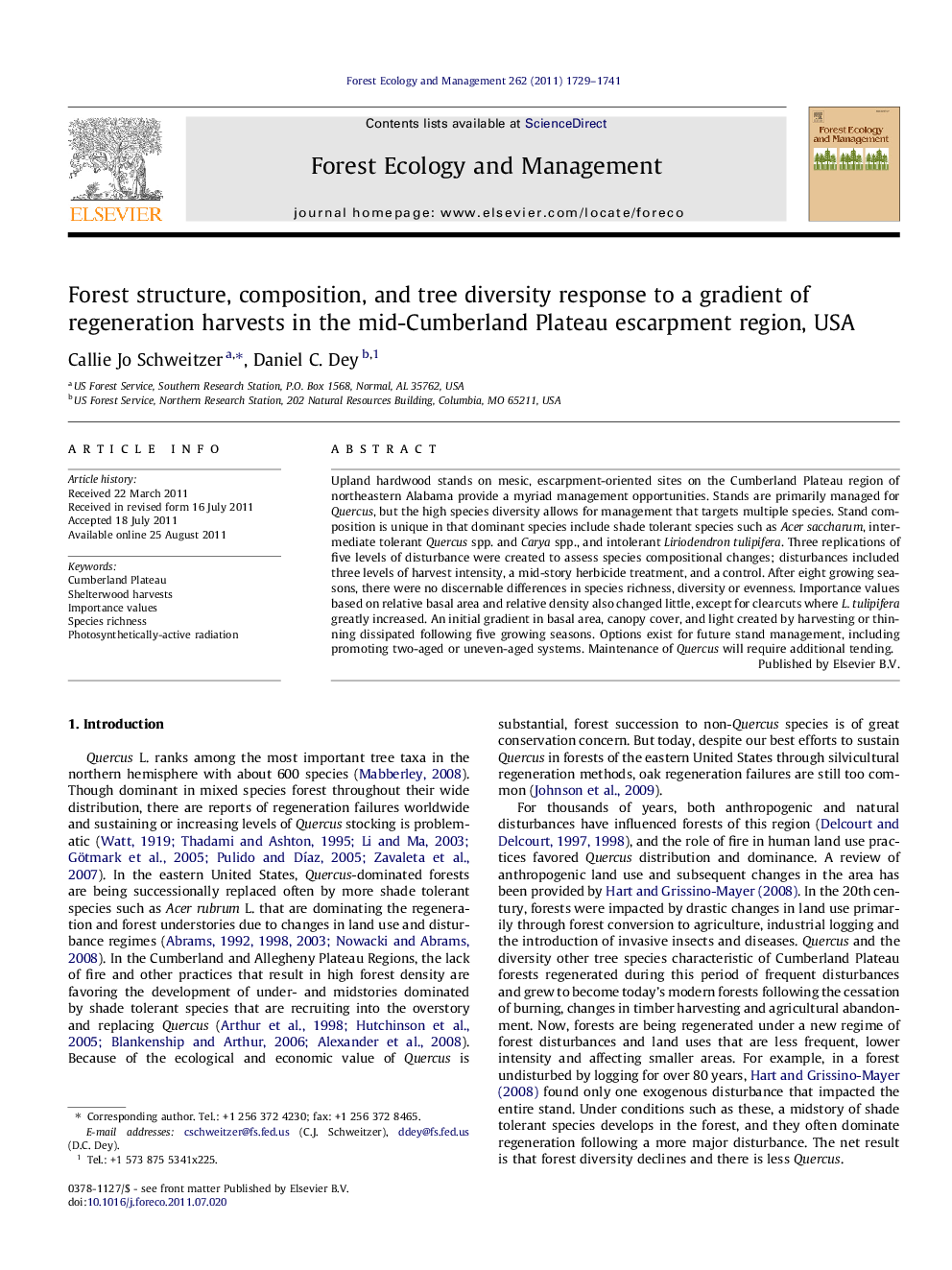| Article ID | Journal | Published Year | Pages | File Type |
|---|---|---|---|---|
| 87588 | Forest Ecology and Management | 2011 | 13 Pages |
Upland hardwood stands on mesic, escarpment-oriented sites on the Cumberland Plateau region of northeastern Alabama provide a myriad management opportunities. Stands are primarily managed for Quercus, but the high species diversity allows for management that targets multiple species. Stand composition is unique in that dominant species include shade tolerant species such as Acer saccharum, intermediate tolerant Quercus spp. and Carya spp., and intolerant Liriodendron tulipifera. Three replications of five levels of disturbance were created to assess species compositional changes; disturbances included three levels of harvest intensity, a mid-story herbicide treatment, and a control. After eight growing seasons, there were no discernable differences in species richness, diversity or evenness. Importance values based on relative basal area and relative density also changed little, except for clearcuts where L. tulipifera greatly increased. An initial gradient in basal area, canopy cover, and light created by harvesting or thinning dissipated following five growing seasons. Options exist for future stand management, including promoting two-aged or uneven-aged systems. Maintenance of Quercus will require additional tending.
► We examined stand characterization to initial shelterwood harvests and clearcutting. ► Few similar studies exist for Cumberland Plateau escarpment forests. ► Species composition changes were not discernable following shelterwood treatments. ► Harvesting impacted forest structure. ► Clearcutting shifted species composition from Quercus to Liriodendron-dominance.
